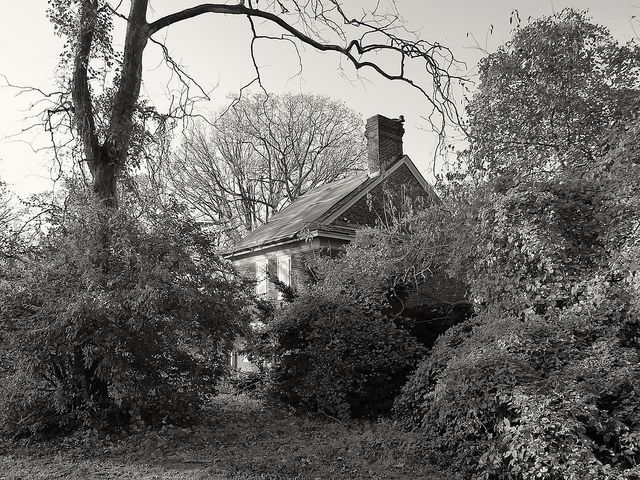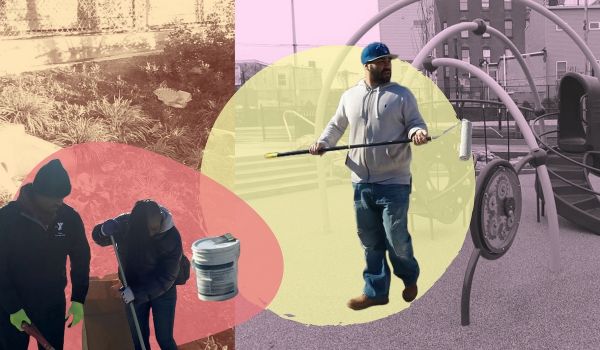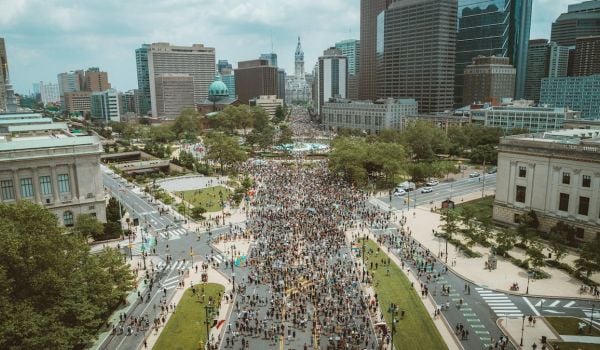Last November, the Philadelphia City Council approved a $2.67 million increase to funding for the Department of Parks and Recreation. The decision was roundly cheered by residents and the advocacy groups that had long pushed for the cash infusion.
“This has been unprecedented for many years, it’s a excellent start. This will mean more boots on the ground doing maintenance,” said Lauren Bornfriend, director of the Philadelphia Parks Alliance. The advocate credited council members for having the courage to commit higher-than-expected city revenues to parks and rec facilities. The funding increase, which will take effect in the second half of the upcoming fiscal year, will translate into 50 new employees.
But while the boost to parks and rec was hardly controversial among residents, it took nearly a year of campaigning and hundreds of volunteers to force council’s hand.
“We had people testifying at every neighborhood budget hearing across the city,” said Bornfield “We had 250 people chanting at the city council budget hearing. We had several thousand sent out to city council and the mayor. We had a strategy dinner with over 100 community leaders from across the city.”
And that was just to secure, as Bornfriend mentioned, “a start.” The funding increase is still far less than the additional $17 million a year that Mayor Michael Nutter said, while campaigning for his current office in 2007, was required for basic maintenance of the city’s park system alone.
And that, in a nutshell is the problem: Everyone loves the idea of parks and rec centers, but no one likes actually paying for them. Parks and Recreation services have long been whipping boys of city councils and municipal budget-makers across the country, with funding cuts being less politically charged than those to emergency services and less immediately noticeable than, say, libraries. With long-standing national and global economic uncertainty eating into municipal revenues, cuts to park budgets have become more frequent and pronounced.
The reductions add up. Prior to the merger of the Fairmount Park Commission, which oversaw all parks in the city, and the Recreation Department in 2010, the city’s park system budget had been frozen at about $13 million for more than a decade.
The amount is a pittance for the largest landscaped urban park network in the nation, which now sports crumbling and vacant colonial-era structures, out-of-control vegetation and vanishing walking trails. The Recreation Department, which had a $33 million budget prior to the merger, had been the target of investigative reports, which found dangerously under maintained facilities system-wide, highlighting leaky roofs and collapsing floors at several rec centers.
The recent merger makes it difficult to separate funding for the two agencies today, but this much is clear: Parks and Rec today has 223 fewer employees than the combined departments did in 2000, according to records from the Parks Alliance. Although the merger was designed to increase efficiency and funding for both systems, Parks and Rec’s operational budget of $47.8 million today is far less than the $51 million the combined systems controlled as separate entities in 2008. That’s just slightly more than the $50 million in funding for the park system alone in 1970, when adjusted for inflation.
In all, with capital expenditures included, Philadelphia spends $64 on parks and rec facilities per resident, one of the lowest totals in the nation. San Francisco spends the most of any major city, with $280 per resident, but even fellow Rust Belt cities spend more, like Cincinnati’s $156 per resident.
While Philadelphia may be an extreme example, parks are routinely shortchanged to varying degrees in many cities, something that park advocates like Bornfriend say actually costs cities in the long run.
“Parks is an extremely high performing department, and it gives back tremendously to every citizen in every neighborhood of the city, and every person that works and visits here,” she said.
“The Trust for Public Land did a study on the economic value of Philadelphia’s parks, and that number was in the hundreds of millions,” said Bornfriend, crediting Philadelphia’s park assets with higher home values for residents.
“There is research right now that children with ADHD who are exposed to more greenery and trees learn more easily,” she added. “Asthma and obesity problems in this city are enormous, driving up healthcare costs. People with access to parks are healthier.”
Bornfriend also noted that funding cuts disproportionately affect lower-income neighborhoods. The process is visible at many parks and recreation facilities. Finnegan Playground, in the economically disadvantaged Grey’s Ferry neighborhood, features a baseball outfield and soccer field that is more dirt than grass. The Letitia Street House, a colonial-era rowhome in the city’s similarly poor Parkside neighborhood, is boarded up and surrounded downed trees and waist high weeds.
The money troubles and their resultant decay are not lost on Deputy Mayor of Environmental and Community Resources Michael DiBerardinis, who oversees the Parks and Rec department today.
“Everyone got hit in the last round of budget cuts because of the economy,” he said. “Everyone took a bitter pill.”
However, DiBerardinis believes that efficiencies gained by combining redundant staff and maintenance duties during the merger, along with more aggressive public-private partnerships, have led to stronger facilities overall.
“We have unified ground maintenance and trades now,” he said. “Both systems have lights, both systems have ball fields, both systems have neighborhood parks, both systems have tennis courts. Even with less money, the system is better taken care of now than it was in the past.”
The city also made national headlines when it launched a fundraising campaign to avert the shutdown of public pools, imperiled by budget cuts, in 2009. DiBerardinis highlighted portions of the city’s emergent Greenworks plan as examples of new strategies that had helped the city maintain and even expand green space in the face of systemic underfunding. The plan has set an ambitious goal of actually creating 500 new acres of green space, sometimes unconventionally.
“We’re converting parts of rec centers and schoolyards into lawns,” said DiBerardinis, referring to a plan to tear up and seed the city’s numerous asphalt covered facilities, a move that could actually save the city money in the long run by mitigating storm water management.
The Rec Department plan also believes that maintenance costs to existing parkland and rec centers can be partially deferred by institutionalizing the process of organizing so-called “Friends” groups for recreation facilities across the city. Numerous such community groups have formed spontaneously, as neighbors combine resources and man-hours to provide extra maintenance and amenities to their local park or rec center, partially as a reaction to unsatisfactory conditions at city facilities. However, such organizations are far more likely to appear in well-to-do areas, where there are more private dollars floating around to make up the difference.
DiBerardinis believes the Rec Department can help set up additional groups in neighborhoods that are rich in volunteers but short on cash. By providing start-ups with park materials, the Department can save money on minor repairs and upkeep through volunteers, instead of city workers.
Ryan Kellermeyer is one such volunteer. Kellermeyer leads Hunting Park United, a kind of model for how support groups for parks can be facilitated, even in impoverished sections of the city.
Both Hunting Park the park and Hunting Park the neighborhood have been long neglected by the city government. Lack of maintenance and use transformed the park from an asset into a liability for the whole area.
“Our biggest problem was a perception that the park was unsafe and not family friendly, and that was a reasonable perception,” said Kellermeyer, who works for a local law firm and is a member of the Hunting Park Civic Association. “For many years the facilities had been neglected. There was a report on NBC news that out of the whole 87-acre park, I think there was one working swing.”
“We’ve also had problems with petty theft and prostitution,” he added. “You could walk through the park and find condoms and, occasionally, used needles.”
In 2010, officials from the Rec Department and the non-profit Pennsylvania Horticultural Society approached a group of neighbors and civic leaders who were already meeting in a local gym to hash out the details for improvements to Hunting. Promising a small amount of material support for clean ups and other activities, Hunting Park United was formally created as a support group to guarantee upkeep of some new amenities, like a plan for an orchard. Staffed entirely by volunteers, the group has organized a regular farmer’s market, coordinated flower plantings and other small improvements.
Kellermeyer said that more significant than, say, replacing a line of dead rosebushes, is having a “stewardship plan” so that members learn skills that will reduce the need for maintenance in the future.
“Sure, Parks and Rec got us some new rosebushes to plant,” he said. “But more than just planting them, we’re going to train people how to actually care for those roses, so next year, there isn’t a need to plant them all over again.”
Most importantly, Kellermeyer said, is the voice his group gives to a community that was often overlooked by the city. While serving as consultants on planning issues and directing serious complaints about park conditions to the city, the organized neighbors also demand more robust political responses from their legislators.
“We’re a sounding board for ideas coming out of the city, and also a voice for neighbor,” he said. “Part of the problem [with the park] was a budget issue, but another part of it was a matter of political will.”
Bornfriend and Kellermeyer both agree that citizen activism is crucial to securing equitable funding for parks.
“The funding increase happened because we pushed really hard,” said Bornfriend, “and there were some council members that wanted it to happen, too.
_200_200_80_c1.jpg)
Ryan Briggs is an investigative reporter based in Philadelphia. He has contributed to the Philadelphia Inquirer, WHYY, the Philadelphia City Paper, Philadelphia Magazine and Hidden City.
















